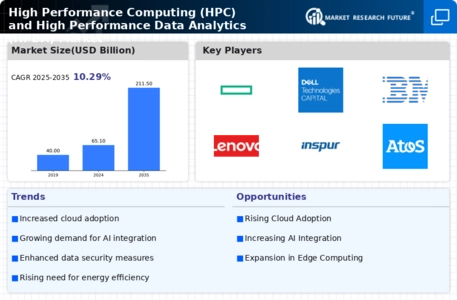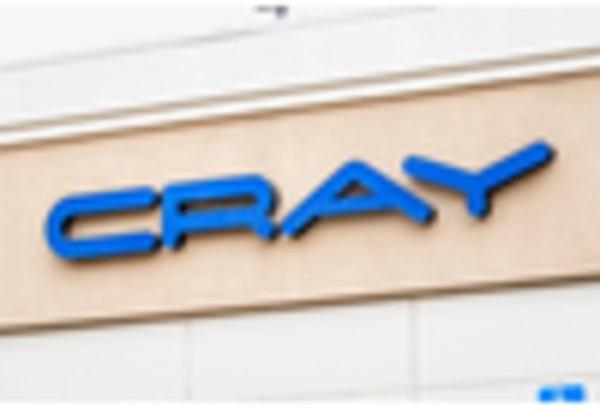The High Performance Computing (HPC) and High Performance Data Analytics (HPDA) Market is characterized by rapid technological advancements and an increasing demand for data processing capabilities across various sectors. Key growth drivers include the rising need for complex simulations, data-intensive applications, and the integration of artificial intelligence (AI) into traditional computing frameworks. Major players such as NVIDIA (US), IBM (US), and Hewlett Packard Enterprise (US) are strategically positioned to leverage these trends. NVIDIA (US) focuses on AI-driven solutions, enhancing its GPU offerings to cater to the growing demand for machine learning applications. IBM (US) emphasizes hybrid cloud solutions, integrating HPC with cloud services to provide scalable data analytics capabilities. Meanwhile, Hewlett Packard Enterprise (US) is investing in edge computing technologies, aiming to optimize data processing at the source, thereby enhancing real-time analytics capabilities. Collectively, these strategies shape a competitive environment that is increasingly focused on innovation and technological integration.
In terms of business tactics, companies are localizing manufacturing and optimizing supply chains to enhance operational efficiency and reduce costs. The market structure appears moderately fragmented, with several key players holding substantial market shares while also facing competition from emerging firms. This fragmentation allows for diverse offerings and innovation, as companies strive to differentiate themselves through unique value propositions and technological advancements.
In September 2025, NVIDIA (US) announced the launch of its latest AI supercomputer, designed specifically for healthcare applications. This strategic move is significant as it positions NVIDIA at the forefront of AI integration in HPC, potentially revolutionizing data analysis in medical research and diagnostics. By focusing on healthcare, NVIDIA not only expands its market reach but also addresses critical industry needs, thereby enhancing its competitive edge.
In August 2025, IBM (US) unveiled a new partnership with a leading cloud service provider to enhance its HPC capabilities. This collaboration aims to integrate IBM's quantum computing technology with cloud infrastructure, facilitating advanced data analytics solutions. The strategic importance of this partnership lies in its potential to accelerate innovation in data processing, allowing clients to leverage quantum computing for complex problem-solving, thus reinforcing IBM's position as a leader in the HPC market.
In July 2025, Hewlett Packard Enterprise (US) launched a new line of edge computing solutions tailored for industrial applications. This initiative reflects HPE's commitment to enhancing real-time data processing capabilities, which is increasingly vital in sectors such as manufacturing and logistics. The strategic importance of this move is underscored by the growing trend towards decentralized data processing, allowing organizations to make quicker, data-driven decisions.
As of October 2025, current competitive trends in the HPC and HPDA market include a pronounced focus on digitalization, sustainability, and the integration of AI technologies. Strategic alliances are increasingly shaping the landscape, enabling companies to pool resources and expertise to drive innovation. Looking ahead, competitive differentiation is likely to evolve from traditional price-based competition to a focus on technological innovation, reliability in supply chains, and the ability to deliver tailored solutions that meet specific industry needs.

















Leave a Comment